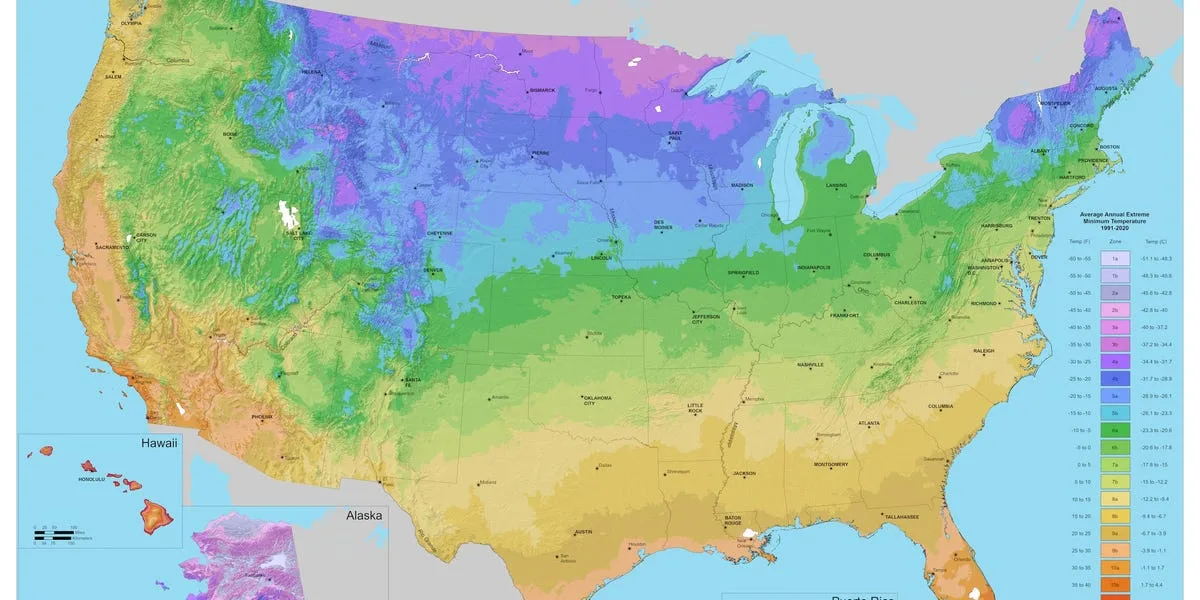The USDA Updates Plant Hardiness Zone Map, Allowing for New Gardening Opportunities
The USDA Updates Plant Hardiness Zone Map
The USDA has recently updated its plant hardiness zone map for the first time in over 10 years. This map is the national standard for determining the types of perennial plants that are most likely to thrive in specific locations. The update is significant as it reveals that half of the United States has shifted to warmer plant zones.
What are Plant Zones?
Plant zones are categories that indicate the average lowest winter temperature in a region. The US is divided into 13 growing zones based on these temperature ranges. These zones help gardeners and growers understand what will grow best in their area.
Shifts in Plant Zones
The new USDA map shows that half of the country has moved into a warmer half zone, while the remaining areas have stayed in the same zone. This means that some regions have experienced a rise in their average lowest winter temperatures, allowing for the growth of plants that were previously not suitable for those areas. For example, central Arkansas has shifted from zone 7b to zone 8a, which has prompted gardeners like Megan London to consider growing new treats like kumquats and mandarin oranges.
The Limitations of the Map
While the USDA map is a helpful guideline for determining plant suitability, it is important to consider other factors such as summer temperatures and soil quality. Additionally, the map does not account for microclimates that may exist within a garden due to factors like shading or sun exposure.
Causes of the Shift in Plant Zones
The USDA emphasizes that the shift in plant zones is not solely due to global climate change. Factors like variations in weather patterns and the specific years of data used for analysis also play a role. The update incorporates data from thousands more weather stations, resulting in a more accurate and detailed representation of the country’s plant zones.
The Influence of Climate Change
Although the specific update is not directly attributed to climate change, it is confirmed that average global temperatures are rising. Over time, this will likely result in the gradual northward shift of plant hardiness zones. Climate change continues to have an impact on the ability of plants to thrive in certain regions.
Source: The USDA’s new plant zone map could change how you garden, including when and what you grow







